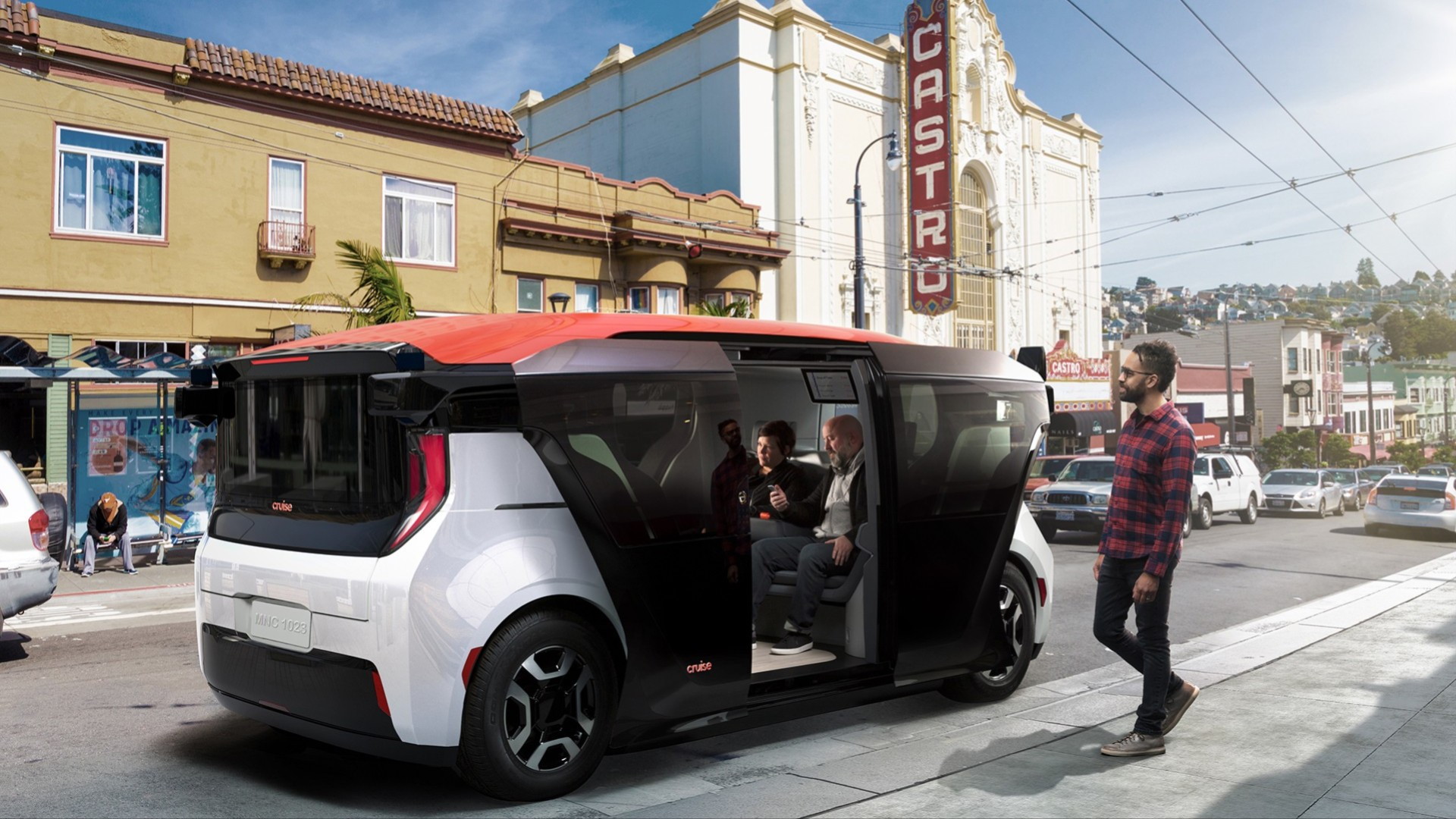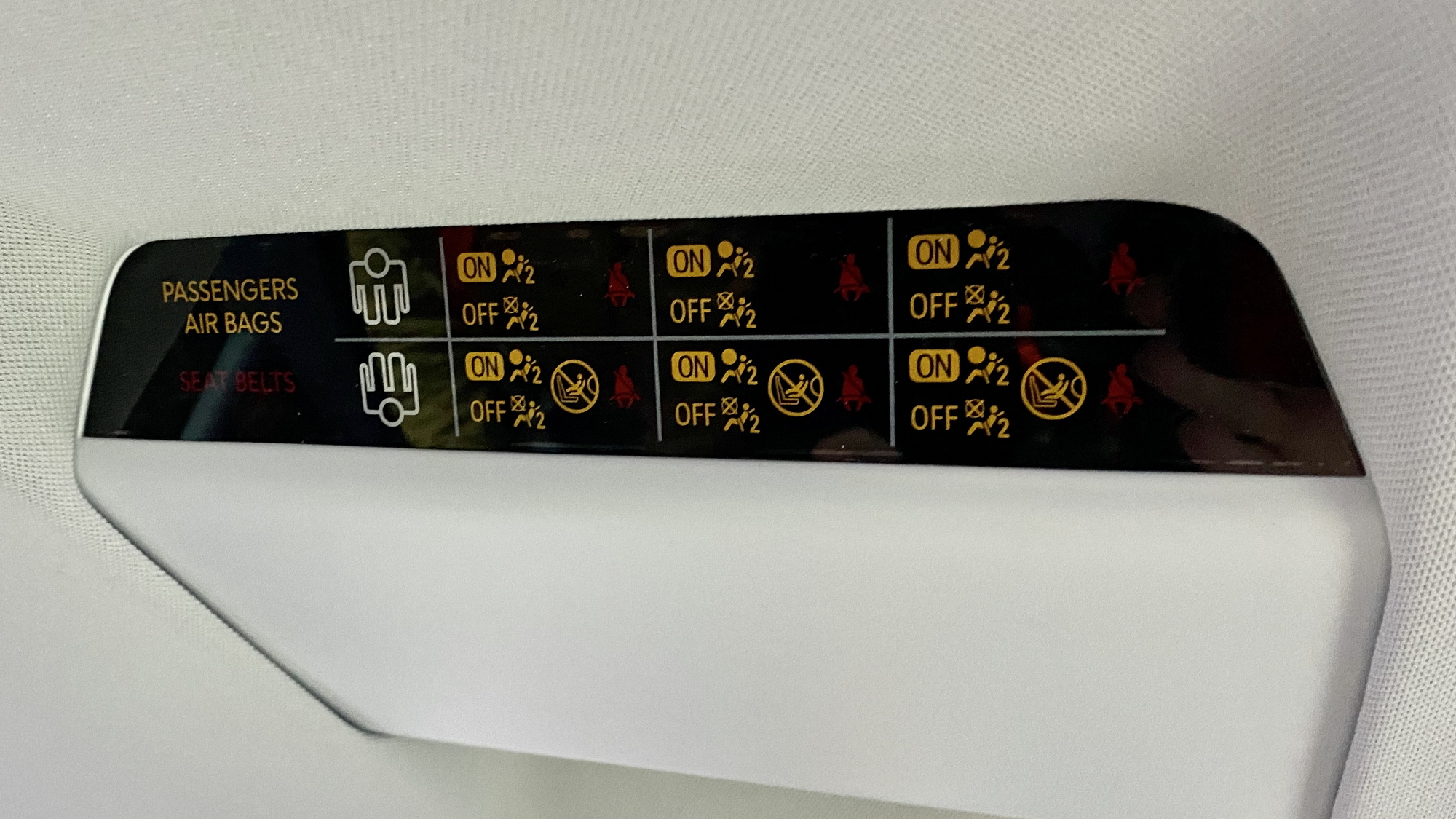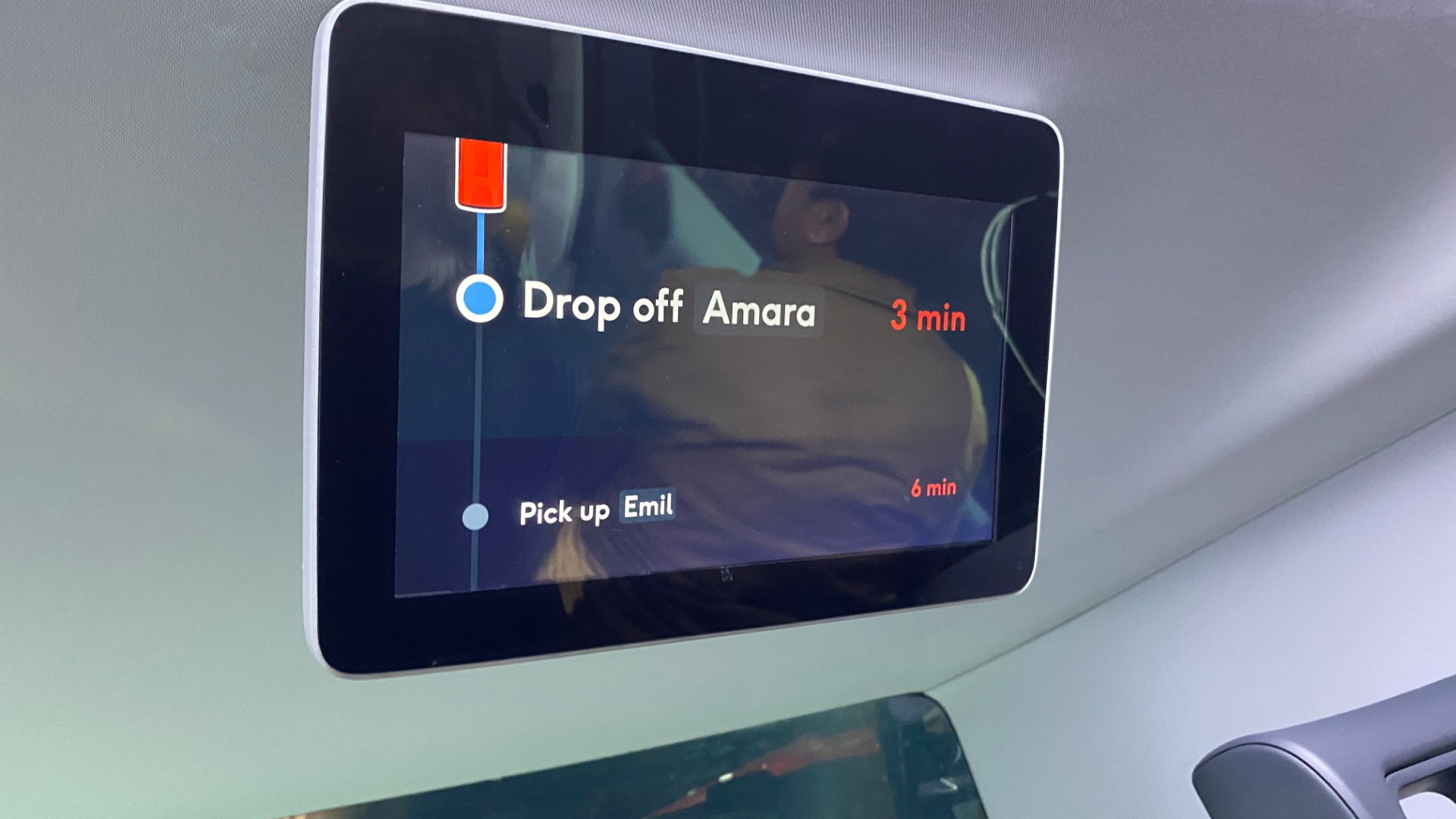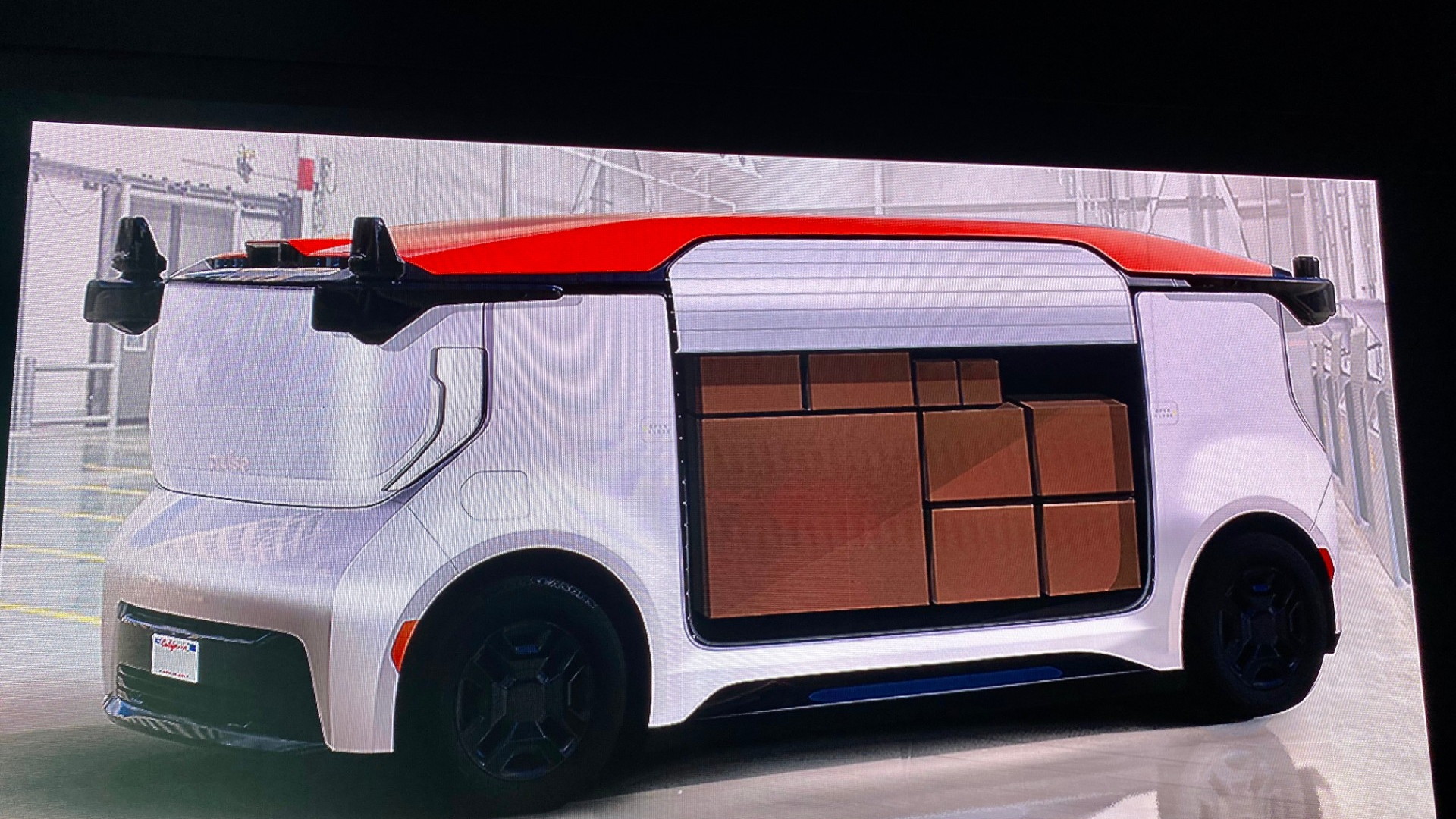During the launch of the Cruise Origin driverless car, GM’s Cruise declared driving as we know it—and ride-sharing as we know it—obsolete.
“This is the end of the human-driven, gasoline-powered single-occupant car, and the beginning of the future—the future beyond the car,” boomed a voice.
The Origin seats six adults and takes up about the same footprint as a full-size sedan, while its tall, 78-inch height is still able to get inside parking buildings. On the outside and on the inside it more closely resembles a luxurious train car than a motor vehicle. The smoothly sculpted exterior has sliding doors that open wide—rather than swinging out, which could injure bicycle and scooter riders—and the interior has two sets of three large seats with a vast expanse of legroom in between.
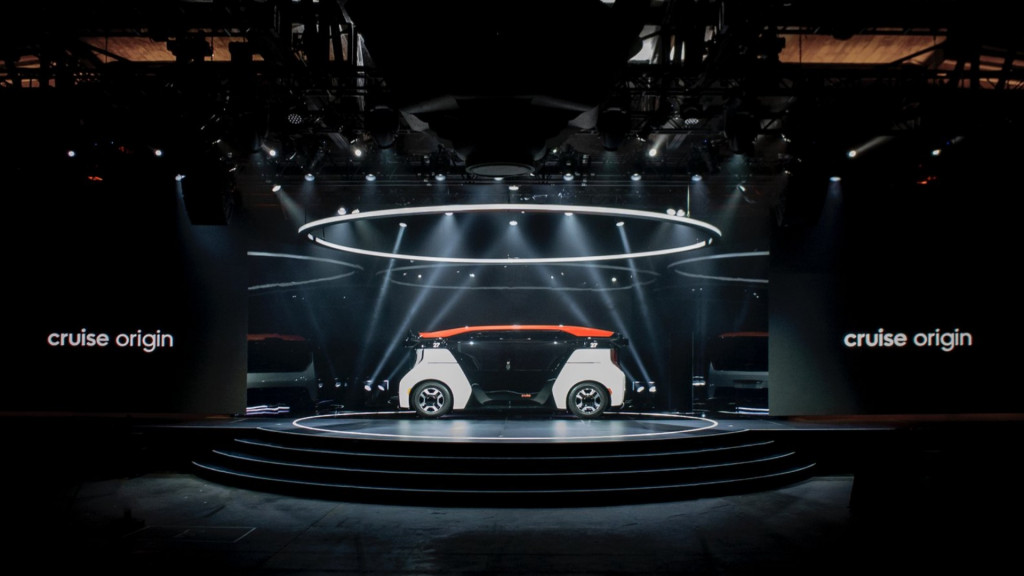
Cruise Origin driverless electric car intro - January 2020
It’s what the Origin doesn’t have that’s most noteworthy. It’s a departure from the traditional passenger-car template of the Chevy Bolt EV–based cars Cruise tests now. There’s no driver’s seat, no pedals or steering wheel, no gauges, and not even any windshield wipers or rearview mirrors. The only interface on the inside is a button you press when you’re ready to start the trip.
Cruise wants the Origin to provide the same consistent experience everywhere it’s offered—one that will be consistently better than human-driven ride-hailing.
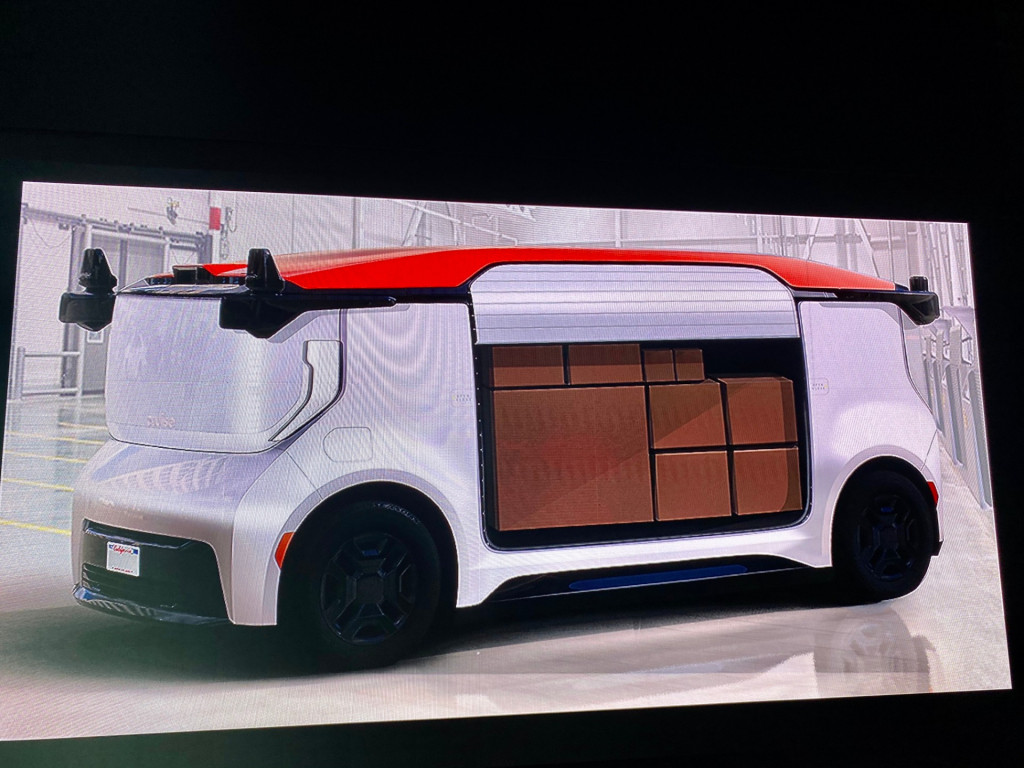
Cruise Origin driverless vehicle - cargo version
That experience won’t be offered for sale in any form—not even the cargo variant Cruise teased briefly. “It’s not a product you buy; it’s an experience you share,” said Cruise CEO Dan Ammann.
Cruise wasn’t yet ready to share information about that experience, which will likely be subscription- or membership-based and will aim initially for those who want more consistency versus ride-hailing apps—and an all-electric experience.
“When you use an old-school ride-share app, it’s kind of like rolling the dice," said Cruise Automation co-founder and CTO Kyle Vogt. “You never know what you’re going to get; you might get an awesome car with an awesome driver, or you might get a compact car that smells like Doritos and Mountain Dew.”
Vogt called ride-hailing “a stressful way to get around” and said that Cruise riders will get the same experience every time, whenever they want.
"Most of us are still burning up the atmosphere with gasoline-powered cars, because EVs aren’t yet affordable enough or convenient enough to make the switch,” Ammann said.

Cruise Origin driverless electric car intro - January 2020
The Origin bypasses the anxiety of that switch. The electric vehicle has a propulsion system with “a pretty high level of sharing” with GM’s upcoming BEV3 vehicles—but with redundancies built into all critical components like steering and braking, it’s set up for being driverless at a true Level 5, with nobody on board needing to pay attention to the road ahead.
It does the calculations on trip length and range, and recharges when needed at a Cruise charging station.
Those smarts enable the Origin to gain a fiscal advantage over ride-hailing operations—with very high utilization. “The Origin is going to drive all day and all night; it costs a lot less to make than you’d expect (about half as much as a long-range EV); it’s going to last a million miles; and you can share it,” Ammann explained, adding that it can save some people $5,000.
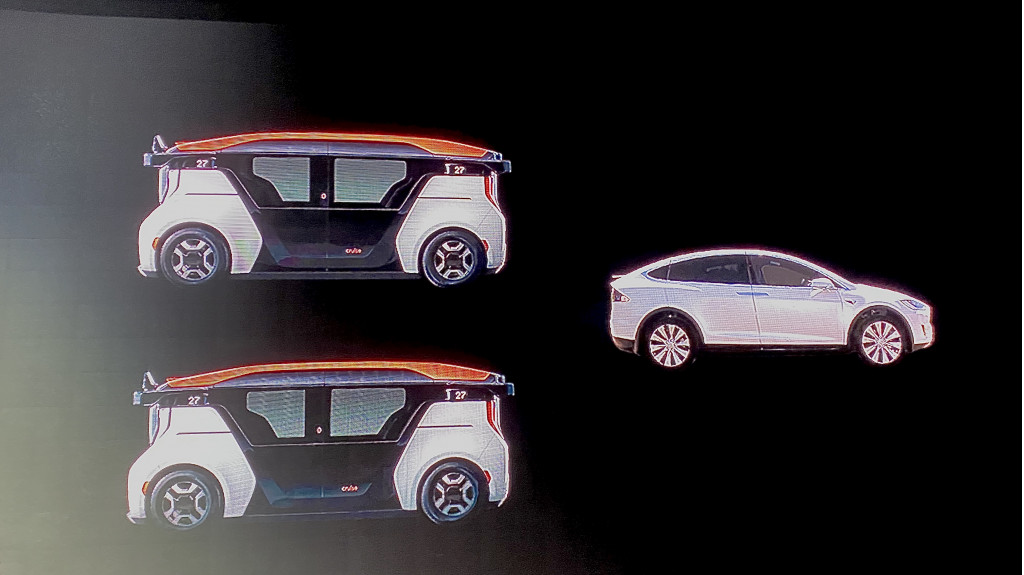
Cruise Origin driverless vehicle
Another thing that’s going to save Cruise money is that the body (mostly steel and aluminum) is designed to last many generations of sensor technology—so there’s no need to roll out a new fleet with each iteration.
Beyond saving money, that means fewer cars clogging up our roads, fewer cars piled into parking lots, and eventually fewer cars going into the scrap heap.
The Origin is roughly a year away from first testing on San Francisco streets—and it might get some testing in other closed environments before then—but the company’s current Gen 3 vehicles continue to gather data that will be used for smoother operation in them. It needs cell-tower connectivity most of the time, so the use target within a few years is essentially an airport shuttle or urban transportation, as they’re both models they could initially focus on for the most immediate return on investment.
Factors beyond Cruise’s control will affect how quickly that return happens. Ammann says that Cruise is working very closely with NHTSA and its recently revised framework for autonomous vehicles. And once it gets the vehicles out there, the days may be numbered for city driving as we know it.
